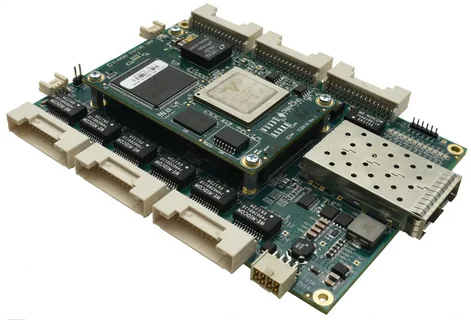Embedded systems discreetly protect human life, our most valuable resource in the modern world. These unseen digital protectors work in settings where a single hardware malfunction, software bug, or design error might have disastrous results. Mission-critical embedded system company bear the responsibility of complete dependability on their small electronic shoulders, from the flight control systems that maintain airplanes in a safe aerial position to the medical devices that manage heartbeats. Developing technology that must operate faultlessly under the most trying circumstances, sometimes for decades without maintenance or upgrades, is a special challenge for the engineers who develop these systems. Mission-critical systems must attain near-perfect dependability, functioning constantly in challenging circumstances while adhering to safety regulations that allow little room for mistake, unlike consumer electronics where rare accidents are only annoying.
- Redundancy Architecture: Building Multiple Safety Nets
The foundation of mission-critical embedded systems is redundancy design, which makes sure that backup systems take over automatically in the event that primary components fail. The gold standard is triple modular redundancy, in which three identical systems carry out the same task concurrently, with the right output being decided by majority vote. This technique is able to hide single point failure in a transparent manner and the system can perform a partial failure even when the system totally fails. Whereas hot standby systems are active all the time right next to primary systems and can be instantly activated, cold standby systems remain idle until called upon. Switchover techniques that identify faults immediately and transition smoothly without interfering with essential processes must be properly designed by engineers.
- Real-Time Operating System Selection: Choosing the Foundation for Reliability
Since the RTOS is the cornerstone upon which all other software components are built, choosing a real-time operating system is one of the most important choices in the design of mission-critical embedded system design. Deterministic behavior is vital when the schedule of the tasks should be predictable and when the times of response have to be guaranteed in any type of operational situation. Although soft real-time systems can tolerate the occasional violation of the timing limits without falling into a disastrous feedback state, hard real-time systems require strict timing guarantees. Strong inter-task communication mechanisms, priority inheritance protocols to avoid priority inversion, and memory protection features to separate crucial activities from less crucial ones are all requirements for the selected RTOS.
- Fault Detection and Isolation: Identifying Problems Before They Become Disasters
Fault isolation and fault detection mechanisms can serve as early warning systems, to detect any problems prior to their escalation to system failures, or safety hazards. This is done by constantly testing the health of the system via built in self testing features, which check such aspects as communication integrity, sensor precision, and the CPU performance. A basic safety feature offered by watchdog timers is the automated system reset in the event that software stops working or goes into an endless loop. Signature analysis is a technique used by advanced diagnostic systems to identify tiny abnormalities that may be signs of imminent failures by comparing the behavior of the system today with well-established patterns. Critical information and communications are safeguarded by error detection programs, which make sure that tainted data is found and fixed before it may affect system choices.
- Graceful Degradation Strategies: Maintaining Essential Functions Under Stress
When components fail or operating circumstances beyond typical limits, mission-critical systems are protected by graceful degradation solutions, which guarantee that they continue to function at decreased capacity instead of failing entirely. When system resources are limited, priority-based resource allocation automatically forgoes less important processes to maintain crucial ones. In order to preserve core functionality, load shedding methods automatically turn off non-essential capabilities. They do this by adhering to preset priority hierarchies that guarantee the most crucial operations continue. Even in the event that key subsystems malfunction or are unavailable, emergency operating modes offer reduced functionality that can maintain fundamental system performance. Establishing unambiguous operational priorities and executing seamless switching between operating modes without interfering with essential operations are crucial.
- Rigorous Testing Methodologies: Proving Reliability Through Exhaustive Verification
For mission-critical embedded systems, rigorous testing approaches go much beyond standard software testing and include thorough verification techniques that examine every potential operational state and failure scenario. Engineers may confirm system behavior in extreme and edge-case scenarios by using hardware-in-the-loop testing, which generates realistic operating settings where embedded systems interact with simulated real-world circumstances. In order to confirm that safety measures react appropriately and that systems continue to function securely even in the face of adversity, fault injection testing purposefully introduces faults and failures. Environmental testing exposes systems to their extremes in temperature, vibration, electromagnetic interference etc. because this is what they will encounter when it’s implemented in an actual setting.
- Safety-Critical Communication Protocols: Ensuring Reliable Information Exchange
Distributed embedded systems can organize secure and effective communications in mission-critical applications due to the reliability of information exchange methods ensured by safety-critical communication protocols. Time-triggered protocols eliminate any ambiguity in event-based messaging that can cause timing violations, especially when a high level of safety is critical. Error detection and repair solutions by using checksums cyclic redundancy checks and forward error correction protects against communication failures and also ensure the integrity of data in a noisy environment. Although the communication failures are determined by the timeout systems and the correct safety measures are activated accordingly, the acknowledgment procedures must be in place to see that the relevant messages find their rightful recipients. As a result of byzantine fault tolerance approaches, systems are able to maintain reliable communications in the unlikely situations whereby there are malicious or unpredictable behaviors among some of the network elements.
- Continuous Monitoring and Maintenance: Sustaining Long-Term Reliability
Using monitoring and maintenance methods, the reliability and safety of the mission-critical embedded systems can be sustained throughout long system operation lifetimes, typically including decades. Remote diagnostic enables the maintenance teams to view any potential issues prior to their impact on the functioning of the system because of real-time monitoring of system health statistics. To predict component breakdowns and plan maintenance activities during planned shutdowns instead of trying to pin them down after breakdowns unexpectedly, predictive maintenance algorithms assess operational data. Version control and configuration management systems maintain records of every change to software and hardware throughout the lifetime of the system, ensuring that no updates and changes generate new safety risks.
Conclusion
The ultimate in engineering perfection is found in mission-critical embedded systems, where abstract ideas are applied in the most demanding applications conceivable. The design of dependable, secure embedded systems is based on the eight principles listed above, each of which adds crucial capabilities to the overall safety and dependability equation. From aerospace navigation to medical devices, these systems often rely on components from the biggest semiconductor company suppliers who understand the stringent requirements for fault tolerance and real-time performance. These design concepts will become even more crucial as our civilization depends more and more on embedded devices to perform essential tasks.





Be First to Comment